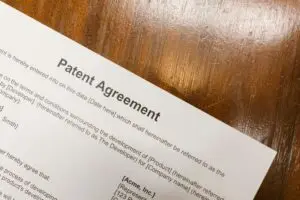When you think of an invention and aim to patent it, you may want to ask yourself what has been done before. If someone has already published something similar that compromises the novelty and non-obviousness of your technology, you will have trouble patenting your invention.
How to find out if you can patent your invention? The key is in the prior and competing art.
What is Prior Art
Prior art is any evidence that someone else has come up with the invention or idea you are thinking of.
We are talking about anything that is made available or disclosed to the public that might be relevant to your patent claims before the effective filing date of an application.
The fundamental basis of patentability is the novelty and non-obviousness of your claims, which can only be proved with the research of previously disclosed information related to your technology.
When we think about it, we tend to limit our scope to just previous patent applications and other pieces of information that we can find in patent databases.
However, it goes much more.
Everything that has been issued or published can be used as a reference point in a patentability search, regardless of the format of this publication, as long as it speaks to aspects of your invention. Examples of prior art would include:
- Journal publications
- Presentations
- Books and articles
- Conference proceedings and abstracts
And here is the difficult part.
There are a lot of invention disclosures and patent applications. The body of literature is growing at an exponential pace, and many of these inventions never become products. Although the technology is not commercialized, if there is evidence somewhere and it is relevant to your patent claims, then it is prior art.
What is Competing Art
When you are doing the prior art research for your invention, you should also consider the competing art.
The competing art are the ideas and inventions that are not exactly like yours, but do the same job.
Most inventions are a solution to a problem, and most problems have more than one way to be solved. So you need to examine if the other solution, the competing art, may have more advantages than yours. When we commercialize your idea, alternative solutions will be our competition. So in order to justify that our solution is better, we need to know what the competing art is for your field and invention.



